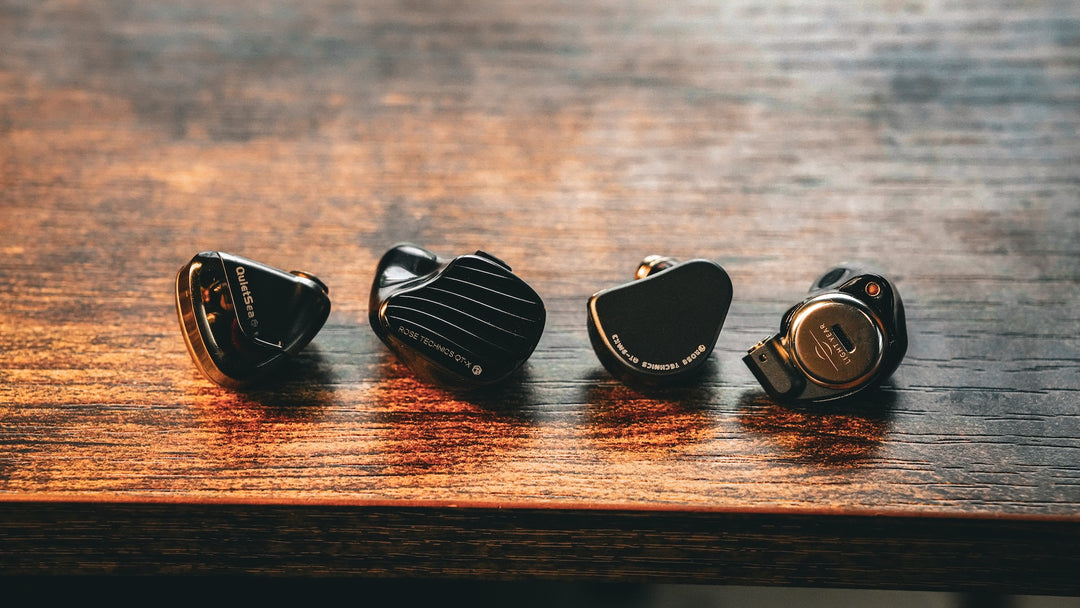Auris Audio is known for creating handcrafted, boutique tube amps, and they created EarMen with the goal of bringing the same level of passion to solid state and portable products. Angel is their latest portable DAC providing an array of features that audiophiles crave on the go, but is it enough to stand out in a crowded field?
Build and Design
Angel comes in a fairly simple package containing the basics you need to get started. There’s a USB-C to USB-C cable, adapters for digital coax and optical outputs, and the manual. The unit itself is made in Serbia, primarily of aluminum, with a rock solid construction and great all around feel.
For inputs, outputs, and other connectivity options, Angel has 3.5mm single-ended and 4.4mm balanced outputs for both headphone and line out. Input is either S/PDIF via digital coax, optical (with provided adapters), or USB-C. Angel has separate connections for USB input and power to avoid introducing noise into the signal. Output mode is selectable via a switch on the front – ‘Direct’ for headphones and ‘Pre Out’ to use the line out option on the rear. There’s also a high gain mode which offers a little more juice for those hard to drive headphones.
With a max of 8.5Vrms coming from the balanced headphone output, Angel can manage all but the hardest to drive headphones out there. It’s also excellent with IEMs delivering a super low noise floor, no hiss with sensitive IEMs, and a black background. It’s clear that Angel’s design under the hood is as well-crafted as its outer shell.
Sound
Angel’s sound is highly focused on detail and clarity with a clean, transparent output. The tuning is slightly bright, and leans a little bit towards analytical. Characteristically warm headphones and models with a more classic “consumer” tuning have their sound tightened and cleaned up, while headphones that lean more towards a reference sound gain a more incisive character.
The presentation of the bass is accurate and linear. There's strong presentation of bass instruments, but if you’re looking for a DAC to enhance or elevate the existing bass, Angel isn’t it. The midrange is where things feel a bit more forward, adding very strong detail and demonstrating excellent clarity. The treble presentation feels accurate with a clear, airy extension into the upper ranges.
In general, Angel places vocals very much forward in the mix, providing good thickness and body. There’s a crisp brightness in the delivery of acoustic instruments, but combining Angel with brighter headphones can cause the treble to feel a little bit brittle. The textures of bass guitars, kick drums, and various other instruments that reside primarily in the low end are highly detailed and well articulated.
Angel delivers a wide, well-rounded, three-dimensional image, with a great sense of space and strong separation between instruments. In the same way that Angel seems to clean up the sound of warm or more bloated sounding headphones, it enhances and expands the soundstage of narrow sounding headphones, particularly closed backs.
Listening Impressions: Meze 109 Pro, HIFIMAN Arya, Noble Kublai Khan
Angel isn’t the DAC for everyone: particularly those who crave a more “analog” or “tubey” sound. If you’re looking for that, I’d highly recommend the iFi micro iDSD Signature, which falls on the other end of the sound spectrum. To get an idea of what your experience with Angel would be, I took notes on the interaction with specific headphones I tested it with.
Meze 109 Pro takes the characteristic warmth of headphones like the 99 Classics and Empyrean and tries to balance it out with a greater degree of detail and resolution. But if you still find the 109 to be just a little too warm, Angel shifts some of the low mid emphasis to deliver less warmth, but stronger clarity. There’s a subtle widening of the soundstage, along with a strengthening of the separation as well.
I was expecting the HIFIMAN Arya to be a little bright with Angel, but there was great synergy between the two as Angel provided some weight and thickness in the midrange, where Arya can be slightly thin in the vocal delivery. With the Gain+ mode, there was an enhancement of the bass slam and extension which accentuated the deep linear bass of Arya. Arya’s already strong soundstage was likewise supported by Angel, providing great width and depth to the stage.
My experience with the Noble Kublai Khan was similar to that with Arya. Where warmer sounding headphones tend to receive a greater degree of clarity and detail, more neutral headphones and IEMs simply have that existing detail and clarity enhanced without necessarily adding fatigue. What was interesting with Kublai Khan was that in addition to having its natural clarity and detail amplified, there was a subtle improvement in the low bass over most other sources I’ve used with it. Kublai Khan has a bone conduction driver for its subbass, but I typically feel that it isn’t working particularly hard in comparison to other bone conduction IEM. Angel’s design seems to provide the support through the inaudible regions of the bass to activate some of that bone conduction physicality that’s sometimes lost with these IEMs.
The Bottom Line
EarMen Angel isn’t going to give you a bass boost or an “analog-y” sound. Instead it’s here to revel in the precision of high resolution digital audio. If you need a portable DAC/Amp to tame the bloat or muddiness in a warm set of cans, or to enhance the detail and clarity in a neutral set, EarMen Angel does it and with excellent build, design, and style to go with it.










